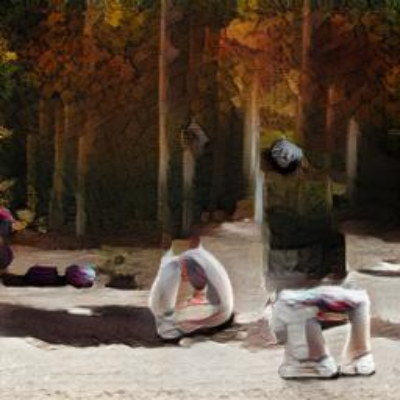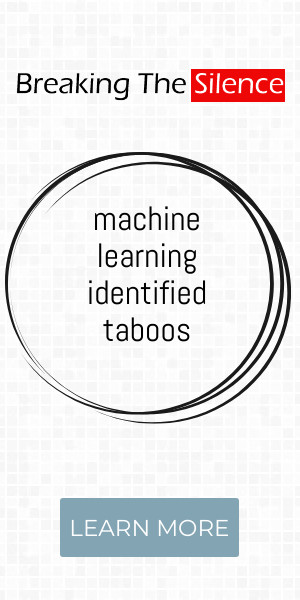What rules shaped humanity’s original social networks? Researchers in Japan developed new mathematical models to understand what conditions produced traditional community structures and conventions around the world, including taboos about incest.
Experts in anthropology consider the incest taboo to be an extremely common social rule affecting kinship structures.
The ancient incest taboo focused on social closeness, rather than genetic or blood relationships, meaning it was taboo to marry anyone born into the same cultural group.
Itao and Kaneko designed a mathematical model and computer simulation to test what external factors might cause generations of biologically related families to organize into communities with incest taboos and direct or generalized exchange of brides.
This is the underlying cause of the traditional community-based incest taboo suggested by the study.
The discovery suggests that those who ruled Ireland thousands of years ago were practitioners of incest, one of human society’s most consistent taboos.
Incest among members of the same «nuclear family» is remarkably rare .
In the modern world when incest occurs it usually takes place and is understood as an abuse of power by older, more authoritative, and usually male family members.
A controversial 2015 University of Zurich study of the remains of elite ancient Egyptians suggested that incest was very common among the pharaohs.

Amenhotep I, one of the most famous of the kings of Egypt, was the product of three generations of sibling incest.
The effects of multi-generational incest appear to have taken a toll on the royal family: Tutankhamun suffered from a genetic bone disease.
One problem with the commonly believed «royals only» exception to incest is the data from Ptolemaic and Roman era Egypt .
This is likely due to an edict, published in 295 A.D. by the Emperor Diocletian, that specifically forbade incestuous relationships throughout the empire.
In the rest of the Roman empire these kinds of unions were a social taboo; accusations of incest were levied against outsiders, including early Christians, as a sign of their moral depravity and barbarian nature.
UNC-Charlotte anthropologist Jon Marks, author of Tales of the Ex-Apes, explained to the Daily Beast that a lot comes down to our definitions of incest.
COUNTY MEATH, Ireland – Recent genetic analysis from remains interred at Newgrange, the largest of Ireland’s great passage tombs built over 5000 years ago, shows that one of the few buried there was the product of an incestuous union – something many academics believe indicates the presence of a deified ruling class like the pharaohs of ancient Egypt.
Geneticists, Lara Cassidy and Daniel Bradley, both of Trinity College Dublin, along with Thomas Kador, an archaeologist at University College London, co-authored the paper published in Nature that analyzed the DNA extracted from NG10 as having enough identical genetic sequence to be a product of incest.
Known as first-degree incest, these kinds of unions are almost universally taboo in human societies.
Most often this involves the creation of a deified or otherwise sacred bloodline, one that has to be preserved by preventing or limiting marriages with outsiders even if that requires pairings which would normally be considered incestuous.
Though the vast majority had degraded to a point only that partial genomes could be retrieved, enough genetic similarities were still found between these bodies to suggest a closely related ruling class controlled the entire island during this period, providing the kind of environment where these sacred, incestuous bloodlines can occur.
However, marriages within a wider kin group don’t necessarily indicate the acceptance of first-degree incest, and many cultures that condone marriage between cousins still hold parent-child or sibling unions as taboo.
Similarly, it’s possible that far from being the product of a formal, sanctioned union, the individual’s true parentage was concealed from the rest of their society, as often happens with cases of incest even now.
Based on this alone the conclusion that Neolithic Ireland had an incestuous ruling class with a mystical or even divine bloodline would seem tenuous – however, the structure of Newgrange itself coupled with a piece of local folklore suggests it may be the correct one after all.
This folk memory of incest, albeit connected to a different tomb, seems to suggest it was remembered as something not just wrong but spiritually harmful to the entire community, robbing the princess of her powers and stopping their attempt to end the plague driving them to starvation.
In those intervening years successive waves of migration and conversion to Christianity had occurred, resulting in a culture that viewed incest as an unequivocal spiritual evil.
It is highly likely that the details and moral implications of the story had mutated into something unrecognizable by the time it was recorded, and that at its core is a memory of a divine or priestly king’s who engaged in incestuous unions and were in some way connected to the life cycle of the sun.

Perhaps it even began as a recounting of the conception of the individual buried in Newgrange, with his burial in a place of honor indicating that while his society didn’t condone incest it also didn’t punish those born as a result either.
All we do know for sure is that a relatively small kin group was buried in the passage tombs across Ireland and that at least one individual, interred in the largest and presumably most high status of those tombs, was the product of first-degree incest.
Young girls are easy targets of incest abuse in such male-centric societies.
Roland C Summit, professor of Psychiatry at the Harbor-UCLA Medical Centre, California, US, summarised many of the adaptations made by victims of incest in his article titled ‘The child sexual abuse accommodation syndrome’.
By 1986, Diana E H Russell, a feminist writer and activist, wrote in her book The Secret Trauma some form of incestuous activity, ranging from minimal to brutal aggressive, was found in approximately one in 20 families that included daughters and their natural fathers, and one in seven families in which daughters resided with stepfathers.
Discussing the psychiatric impact, psychiatrist Richard P Kluff writes in his Psychiatric Times article that few circumstances confront the psychiatrist with more complex, painful and potentially-problematic clinical dilemmas and challenges than treatment of the incest victim and management of the situation in which incest has been suspected or alleged by one member of a family, and denied, often with both pain and outrage, by the accused and other members of that family.
Brother-sister incest seems to be on the rise, at least according to my unofficial survey of incest websites.
In perusing websites that feature incest, I found two types of brother–sister incest clips.
In many other cases they casually identify themselves as brother and sister and seem to think nothing of their incestuous behavior.
A recent article noted a rise in incest pornography and attributed it in part to the TV show, «Game of Thrones.» The author, Vanessa Brown, focused on a new genre which she called «Faux-cest.» «FOR the uninitiated, a film with the title ‘Family Play Date’ could be identified as a harmless, wholesome household flick. But in fact, this title — along with a growing number of other films — is part of a growing pornography trend».
« This is but one of numerous incestuous storylines in this series. In season one, Cersei says, »Jaime and I are more than brother and sister, we shared a womb, came into this world together, we belong together.

«In watching clips of the real brothers and sisters who engage in incestuous behavior for profit on the cam shows, I came across similar rationalizations. When one young woman, who barely looked eighteen, was asked how it felt to have sex with her brother, she replied, »It’s cool.
«On another clip, a brother and sister were asked if they were afraid their parents would find out. »They’re too busy having sex with each other and their friends,« they replied. It appeared that in this and other cases, there is an aspect of rebellion that is acted out through the brother–sister incest. If the parents can have hidden sex with one another, the brother and sister can act out their Oedipal jealousy by likewise having hidden sex.
Most of the couples I saw involved older sisters and younger brothers, and it appeared that the older sister was the one that had initiated the incestuous relationship, as well as creating a cam show. The younger brothers, however, were all-to-willing participants in the shows. And just like most porn shows, these shows were most often geared to the female helping male to achieve an orgasm.
Interesting, according to Brown, women and couples are the largest fans of brother–sister incest. Apparently women are attracted to incestuous relationships because they like porn that tells a story, rather than just porn showing people having sex.
Psychologist Georgia Whelan noted that »Mainstream media can «normalize a practice and reduce stigma, shame and judgment increases sexual desire in many people.» She added, «For Game of Thrones to increase incest fantasies in people, individuals would have to repeatedly watch the incest image over and over again and have positive reinforcement, because there has to be reinforcement and repetition for a fantasy to stick».
Another reason why incest and in particular brother–sister incest may be appealing is the very fact that it forbidden.
The question is, once brother–sister and father-daughter and mother-son incest have run their course and have been normalized, what’s next? Bestiality? Cannibalism? Necrophilia? And isn’t this what happened in Ancient Greece and Ancient Rome? In these societies things began to fall apart as rationalizations evolved to justify more and more bizarre sexual practices.
The text of this article was generated by the Breaking The Silence system that collected 5 news articles posted on the web from January 2019 to September 2020 and clustered for the taboo subject of incest















































































